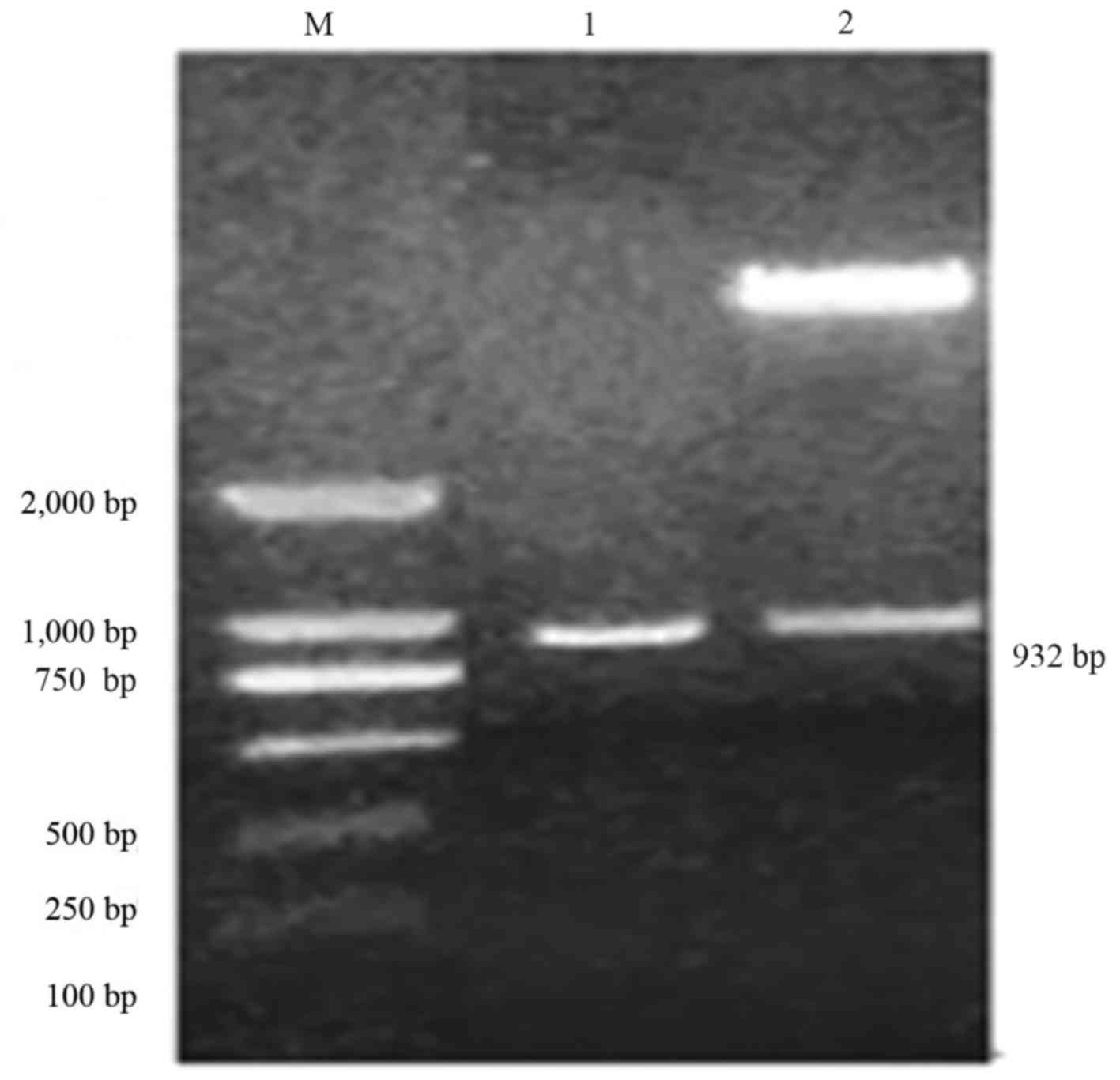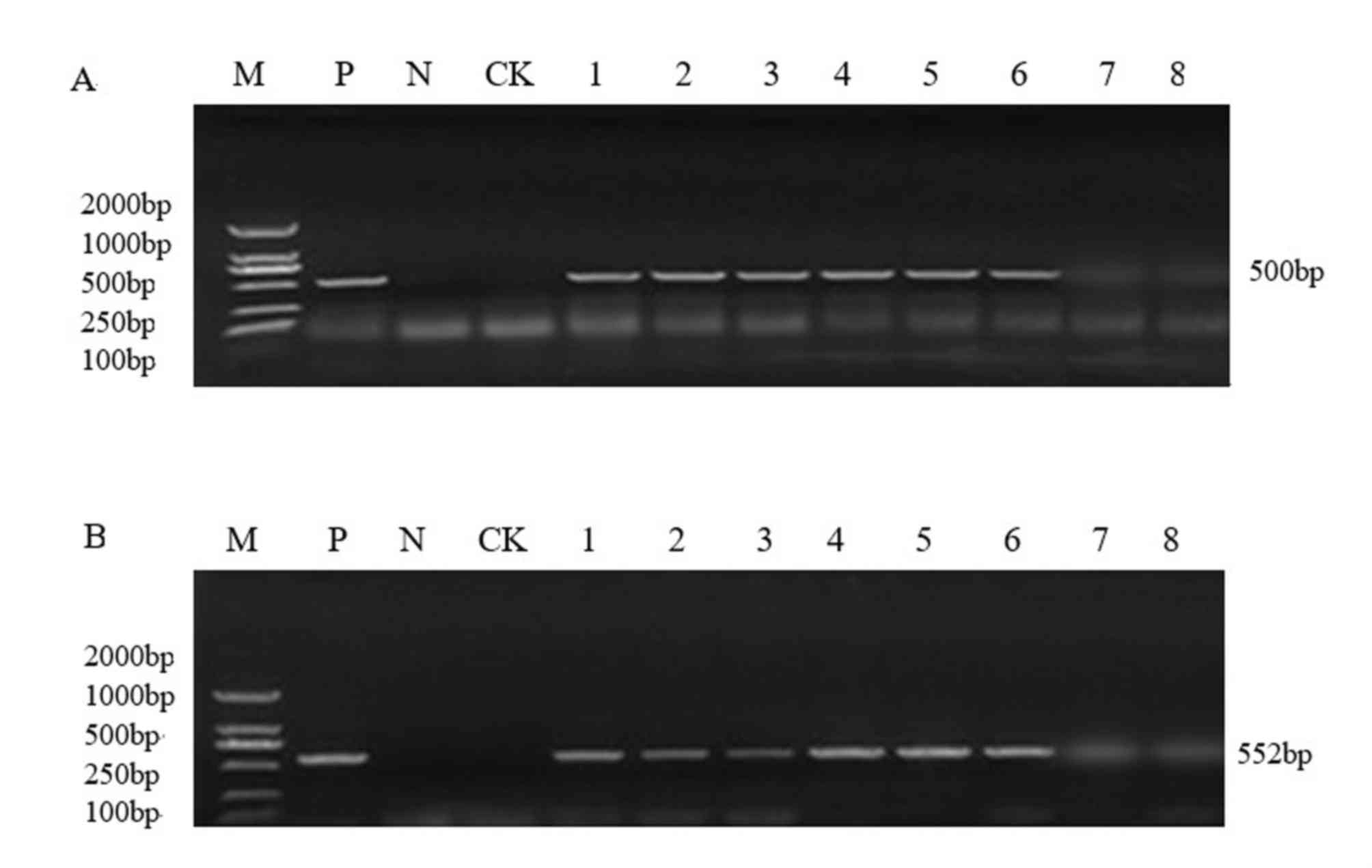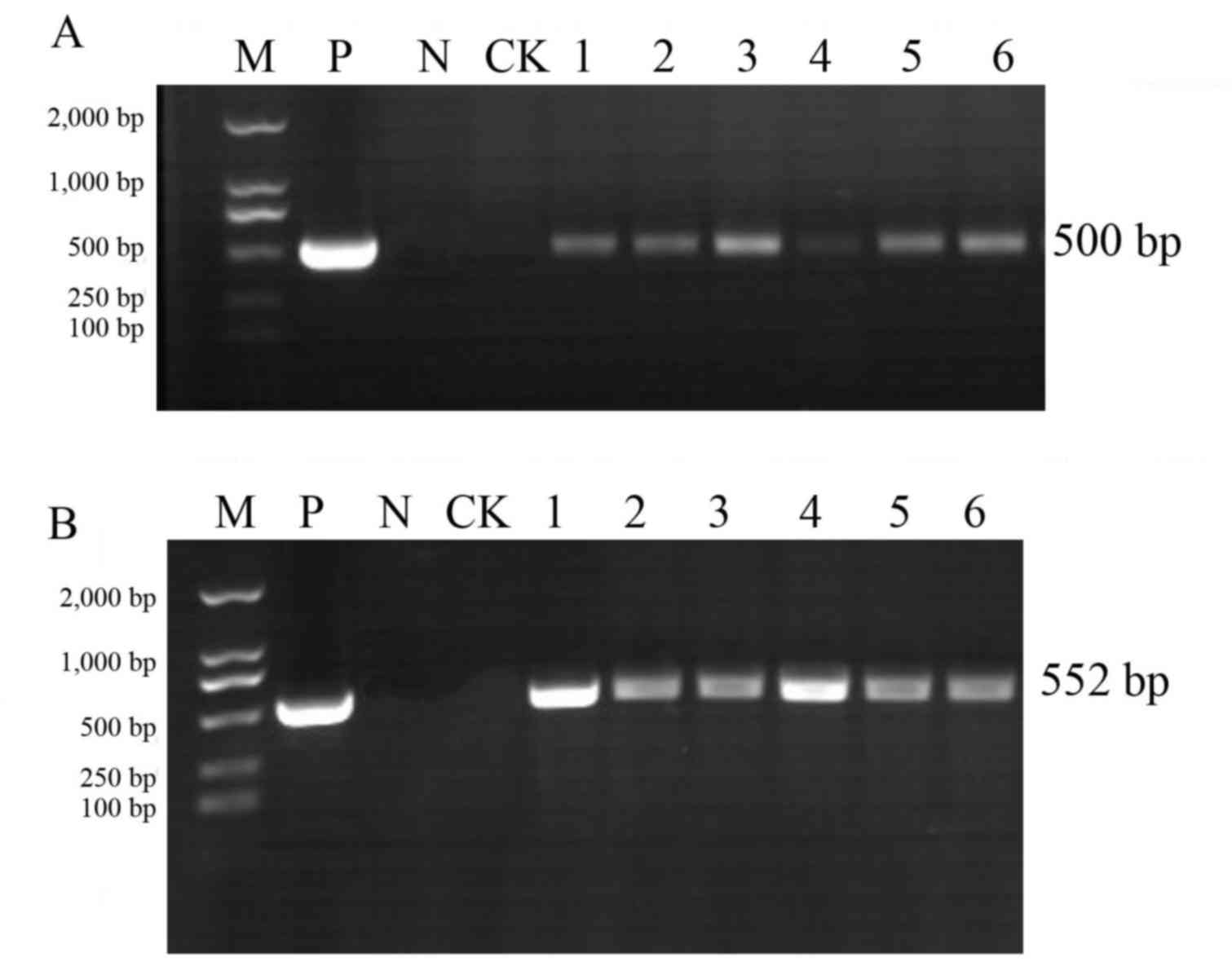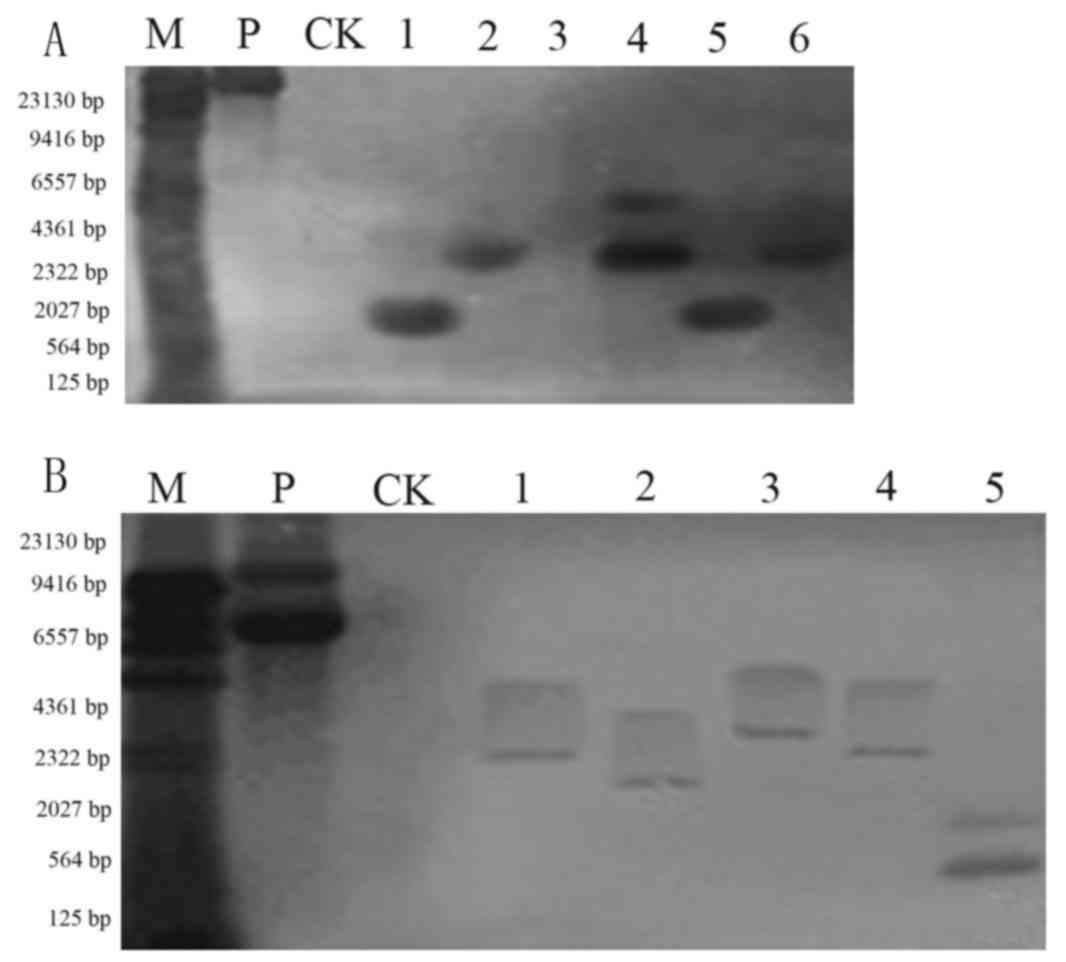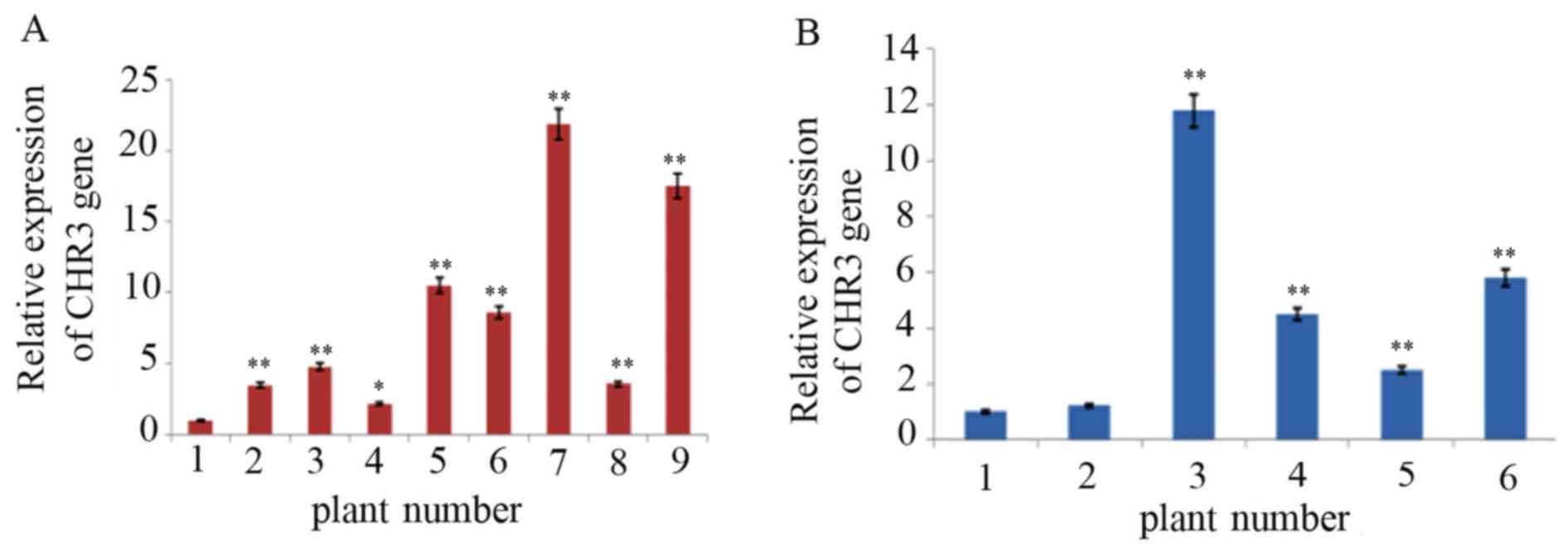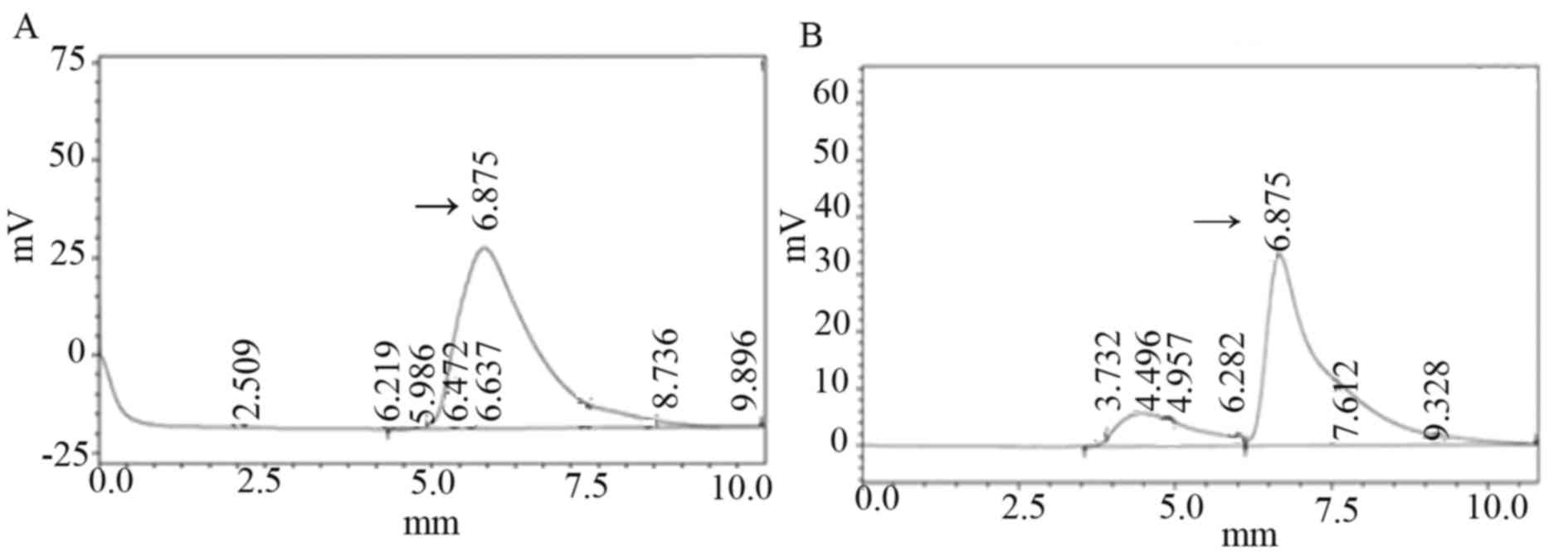|
1
|
Sun JM, Ding AL and Dong HR: High
performance liquid chromatographic determination of isoflavone
content in soybean test samples. Soybean Sci. 19:15–20. 2000.(In
Chinese).
|
|
2
|
Wang Y, Wu L, Sun MY, Zhao X, Han YP, Teng
WL and Li WB: Analysis of gene expression underlying soybean
isoflavone synthesis relative enzymes at different growth stages.
Soybean Sci. 31:887–893. 2012.(In Chinese).
|
|
3
|
Huang JX, Qu LJ, Yang J, Yin H and Gu HY:
A preliminary study on the origin and evolution of chalcone
synthase (CHS)gene in angiosperms. Acta Botanic Sinica. 46:10–19.
2004.
|
|
4
|
Choi EJ and Kim GH: Daidzein causes cell
cycle arrest at the G1 and G2/M phases in human breast cancer MCF-7
and MDA-MB-453 cells. Phytomedicine. 15:683–690. 2008. View Article : Google Scholar : PubMed/NCBI
|
|
5
|
Gao Y, Gu W, Chen L, Xu Z and Li Y: The
role of daidzein-loaded sterically stabilized solid lipid
nanoparticles in therapy forcardio-cerebrovascular diseases.
Biomaterials. 29:4129–4136. 2008. View Article : Google Scholar : PubMed/NCBI
|
|
6
|
Graham MY: The diphenylether herbicide
lactofen induces cell death and expression of defense-related genes
in soybean. Plant Physiol. 139:1784–1794. 2005. View Article : Google Scholar : PubMed/NCBI
|
|
7
|
Choi EJ and Kim GH: Daidzein causes cell
cycle arrest at the G1 and G2/M phases in human breast cancer MCF-7
and MDA-MB-453 cells. Phytomedicine. 15:683–690. 2008. View Article : Google Scholar : PubMed/NCBI
|
|
8
|
Zhang Z, Lui ZK, Huang Z, Ma J, Yao D, Qu
J and Wang PW: Isolation and functional characterization of soybean
chalcone reductase gene Gmchr4. Chin J Oil Crop Sci. 36:720–727.
2014.(In Chinese).
|
|
9
|
Ren HL, Ma QB, Yang CY, Song EL, Wang RP,
Ma TX, Tang YJ and Nian H: Identification of Phytophthora root rot
disease of soybean breeding materials in South China. Soybean Sci.
31:453–456. 2012.(In Chinese).
|
|
10
|
Liu J, Todd TC and Trick HN: Rapid in
plant evaluation of the root expressed transgenes in chimeric
soybean plants. Plant Cell Rep. 29:113–123. 2010. View Article : Google Scholar : PubMed/NCBI
|
|
11
|
Oliver Yu and McGonigle Brian: Metabolic
engineering of isoflavone biosynthesis. Advance Agronomy.
86:147–190. 2005. View Article : Google Scholar
|
|
12
|
Li D, et al: Clone and transformation of
chalcone reductase gene CHR1 in soybean. J Northwest Sci Tech Univ
Agriculture Forestry (Social Science). 43:2015.
|
|
13
|
Wu N, Wang P, Li D, Dai L, Zheng C, Lu S,
Cai Y, Zhang Z, Qu J and Xia H: Function of chalcone reductase gene
CHR1 in soybean. Hereditas. 36:707–712. 2014.PubMed/NCBI
|
|
14
|
Graham TL, Graham MY, Subramanian S and Yu
O: RNAi silencing of genes for elicitation or biosynthesis of
5-deoxyisoflavonoids suppresses race-specific resistance and
hypersensitive cell death in phytophthora sojae infected tissues.
Plant Physiol. 144:728–740. 2007. View Article : Google Scholar : PubMed/NCBI
|
|
15
|
Liu GY: Isolation, sequence identification
and tissue expression profile of two novel soybean (glycine max)
genes-vestitone reductase and chalcone reductase. Mol Biol Rep.
36:1991–1994. 2009. View Article : Google Scholar : PubMed/NCBI
|
|
16
|
Zhang C, Wang PW, Zhang Z, et al: Clone of
CHR3 and its activity analysis in vitro. J Northwest Sci Tech Univ
Agriculture Forestry (Social Science). 43:2015.
|
|
17
|
Zhu C, Wu J and He C: Induction of
chromosomal inversion by integration of T-DNA in the rice genome. J
Genet Genomics. 37:189–196. 2010. View Article : Google Scholar : PubMed/NCBI
|
|
18
|
Zhu QH, Ramm K, Eamens AL, Dennis ES and
Upadhyaya NM: Transgene structures suggest that multiple mechanisms
are involved in T-DNA integration in plants. Plant Sci.
171:308–322. 2006. View Article : Google Scholar : PubMed/NCBI
|
|
19
|
Yu L, Liu JP, Zhuang JX, Yang LQ, Zhang
RL, Ye XM and Cheng JQ: Quantitative analysis of real-time PCR
expression production by REST (C) and 2(-Delta Delta C(T)). J
Tropical Med. 7:956–968. 2007.(In Chinese).
|
|
20
|
Liu BF, Zhang YM, Yan YQ and Xu XL:
Screening transgenic tobacco Byreal-Time fluorescent quantification
Pcr technology. J Natural Sci J Harbin Normal Univ. 21:69–72.
2012.
|
|
21
|
Livak KJ and Schmittgen TD: Analysis of
relative gene expression data using real-time quantitative PCR and
the 2(−ΔΔCT) method. Methods. 25:402–408. 2001. View Article : Google Scholar : PubMed/NCBI
|
|
22
|
Schmittgen TD and Livak KJ: Analyzing
real-time PCR data by the comparative C(T) method. Nat Protoc.
3:1101–1108. 2008. View Article : Google Scholar : PubMed/NCBI
|
|
23
|
Li YY: High performance liquid
chromatography applied to the chief ingredients of
eucommiaulmoidesoliv and isoflavones in food analysis. Chongqing
Southwest Univ. 1–53. 2012.
|
|
24
|
Gu Y: Study of detection of soybean
isoflavone using HPLC. Haerbin Northeastern Univ. 1–43. 2011.
|
|
25
|
Ballance GM and Dixon RA: Medicago sativa
cDNAs encoding chalcone reductase. Plant Physiol. 107:1027–1028.
2005. View Article : Google Scholar
|
|
26
|
Sallaud C, EL-Turk J, Breda C, Buffard D,
da I kozak, Wsnault R and Kondorosi A: Differential expression of
cDNA coding for chalcone reductase, a key enzyme of the
5-deoxyflavonoid pathway, under various stress conditions in
Medicago sativa. Plant Science. 109:179–190. 2005. View Article : Google Scholar
|
|
27
|
Young ND, Debellé F, Oldroyd GE, Geurts R,
Cannon SB, Udvardi MK, Benedito VA, Mayer KF, Gouzy J, Schoof H, et
al: The Medicago genome provides insight into the evolution of
rhizobial symbioses. Nature. 480:520–524. 2011.PubMed/NCBI
|
|
28
|
Shimada N, Aoki T, Sato S, Nakamura Y,
Tabata S and Ayabe S: A cluster of genes encodes the two types of
chalcone isomerase involved in the biosynthesis of general
flavonoids and legume-specific 5-deoxy(iso)flavonoids in Lotus
japonicus. Plant Physiol. 131:941–951. 2003. View Article : Google Scholar : PubMed/NCBI
|















